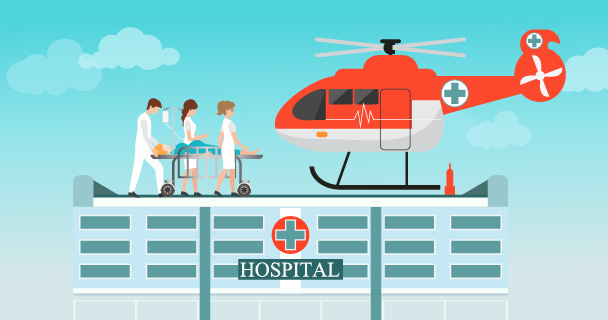blog


The 2016 CMS Emergency Preparedness rule establishes new national requirements for Medicare and Medicaid participating providers and suppliers to ensure those facilities are able to adequately plan for and respond to both natural and man-made disasters. Medicare-certified healthcare providers and suppliers were required to comply and implement all regulations by November 16, 2017. The Joint Commission has also updated their emergency management requirements and is now surveying compliance according to the new standards.
To help clarify the new requirements, HealthStream invited James Paturus, Director of Yale New Haven Health System Center for Emergency Preparedness and Disaster Response (YNHHS-CEPDR) to present an overview of the new rules to HealthStream customers.
A Closer Look at the Requirements
Paturas suggests that organizations that have not historically completed a risk assessment use one that identifies as many specialty areas as possible and integrate results into the emergency plan and training program. Paturas explains that regulators will want to know the risk assessment results and what the organization has done about them. He adds that the Joint Commission and federal agencies are looking to see if organizations are planning in collaboration with partners. Regarding policies and procedures, Paturas suggests that organizations be very specific to the emergency preparedness initiatives.
Some have questioned if an organization needs their own communication plan or if it can be embedded into the body of an existing emergency operations or emergency management plan. Paturas suggests that it could be embedded within an existing plan as long as those elements can be pointed out if CMS requests. Paturas adds, “In terms of crisis communications, we’re looking at more of the critical issues going on, resource needs, and allocation needs versus risk communications. Are there things we need to be telling staff, patients, visitors, and partners that could minimize or mitigate their risk?”
Questions About How to Complete Training, Testing, and Exercises
Paturas points out that most organizations that have reached out to Yale New Haven for assistance are most concerned with how training, testing, and exercises are to be completed. CMS has agreed to allow a tabletop exercise to be accepted as one of the required two exercises, and the second exercise needs to be full-scale. Paturas says, “In this first year we are trying to get some of the smaller organizations that have been less involved in exercises up to speed on what it takes to do an exercise. I would suggest coming together as a group in your area and identifying two or three overarching issues that are based on the risk assessment. Then determine which should be done as a tabletop exercise and which could work best as a full-scale exercise. CMS has left this requirement fairly open, which gives participants some flexibility.”
About the expert
James Paturus MPA, LP, CEM, CBCP, DABCHS, FACCP
Director, Center for Emergency Preparedness and Disaster Response
Yale New Haven Health System (YNHHS)
As Director for the Center for Emergency Preparedness and Disaster Response, Mr. Paturas provides leadership and coordination of emergency preparedness, disaster response, and business continuity for each the YNHHS acute care hospitals and ambulatory/off-site treatment centers located throughout the state. In his role at YNHHS, Mr. Paturas also serves as Director of the World Health Organization (WHO) Collaborating Centre for Emergency Preparedness and Disaster Response; and the CT- DPH designated, Center of Excellence for Emergency Preparedness and Disaster Response. Mr. Paturas has over 40 years of healthcare experience.
Since 2012, HealthStream has partnered with YNHHS-CEPDR to provide courseware designed to help healthcare workers and leaders understand their respective roles in providing care for patients in the event of an emergency. Yale New Haven Health System Center for Emergency Preparedness and Disaster Response develops and disseminates programs and services in the areas of healthcare and public health emergency preparedness, response, recovery, and mitigation.
HealthStream’s YNHHS-CEPDR library includes:
HealthStream’s learning management system and healthcare training solutions support medical training initiatives and allow for the best patient care.
View All Learning & PerformanceExpand the decision-making skills and effectiveness of your healthcare workforce with HealthStream's workforce development programs and services.
View All Clinical DevelopmentComprehensive, industry-leading provider onboarding and credentialing software that validates health outcomes and supports provider assessment.
View All CredentialingMake sure your healthcare staff can schedule out appointments and work schedules with ease using our line of nurse scheduling software solutions.
View All SchedulingWhen you enact HealthStream's quality compliance solutions, you can do so with the confidence your healthcare organization will meet all standards of care.
View All Quality & ComplianceUtilize patient access solutions and advanced reimbursement solutions to manage clinical denials and improve your organization’s reimbursement strategy.
View All ReimbursementLearn about our advanced resuscitation training solutions. Our solutions are designed to help improve patient outcomes.
View All Resuscitation